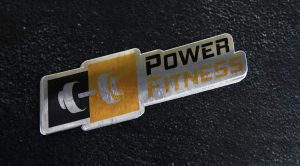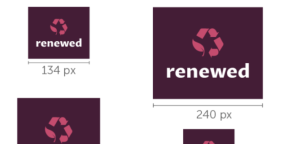Are you a small business owner looking to create a logo that accurately represents your brand? A well-designed logo can help establish your business’s identity and increase brand recognition. However, creating a logo can seem like a daunting task, especially if you don’t have a design background. Don’t worry – with the right tools and guidance, anyone can create a professional-looking logo for their small business.
First, it’s important to understand the key elements of a successful logo. A good logo should be simple, memorable, and versatile. It should also be relevant to your business and communicate your brand’s personality. Once you have a clear idea of what you want your logo to convey, you can start the design process. There are many online logo makers and design tools available that can help you create a logo from scratch, or you can work with a professional designer if you have the budget for it.
Understanding Your Business
Before designing a logo for your small business, it’s essential to understand your brand identity, target audience, and what makes your business unique. This section will guide you through the process of identifying your brand and defining your target audience.
Identifying Your Brand
To create a successful logo, you need to have a clear understanding of your brand identity. Your brand identity is a combination of your business’s personality, values, and mission. To identify your brand, ask yourself the following questions:
- What is your business’s mission statement?
- What are your business’s values?
- What is your business’s personality? Is it playful, serious, or professional?
- What makes your business unique?
Once you have a clear understanding of your brand identity, you can use this information to create a logo that accurately represents your business.
Defining Your Target Audience
Your target audience is the group of people who are most likely to buy your products or services. To define your target audience, you need to consider factors such as age, gender, income, and interests. Here are some questions to help you define your target audience:
- Who is your ideal customer?
- What are their demographics?
- What are their interests and hobbies?
- What are their pain points, and how does your business solve them?
Once you have a clear understanding of your target audience, you can design a logo that appeals to them. For example, if your target audience is young adults interested in fitness, you may want to use bright colors and bold fonts in your logo.
By understanding your brand identity and target audience, you can create a logo that accurately represents your business and appeals to your ideal customers.
Logo Design Basics
Creating a logo for your small business is an exciting process. Your logo is the face of your brand and creates a visual identity that your customers will remember. In this section, we will cover the basics of logo design, including logo types, color theory, and typography in logos.
Logo Types
Before you start designing your logo, it’s important to understand the different types of logos. Here are the three main types of logos:
- Wordmark logos are logos that use the name of the company as the logo. Examples of wordmark logos include Coca-Cola and Google.
- Symbol logos are logos that use a symbol or icon to represent the company. Examples of symbol logos include Apple and Nike.
- Combination logos are logos that combine both a wordmark and a symbol. Examples of combination logos include McDonald’s and Burger King.
When choosing a logo type, consider your brand personality and the message you want to convey to your customers.
Color Theory
Color is a crucial element in logo design. Different colors can evoke different emotions and feelings in your customers. Here are some common colors used in logos and the emotions they can evoke:
- Red can evoke feelings of excitement, passion, and energy. Examples of brands that use red in their logos include Coca-Cola and Netflix.
- Blue can evoke feelings of trust, reliability, and calmness. Examples of brands that use blue in their logos include IBM and Facebook.
- Yellow can evoke feelings of happiness, optimism, and warmth. Examples of brands that use yellow in their logos include McDonald’s and Snapchat.
When choosing colors for your logo, consider your brand personality and the emotions you want to evoke in your customers.
Typography in Logos
The typography in your logo can also convey a message to your customers. Here are some common types of fonts used in logos and the emotions they can evoke:
- Serif fonts can evoke feelings of tradition, respect, and reliability. Examples of brands that use serif fonts in their logos include The New York Times and Tiffany & Co.
- Sans-serif fonts can evoke feelings of modernity, simplicity, and cleanliness. Examples of brands that use sans-serif fonts in their logos include Google and Airbnb.
- Script fonts can evoke feelings of elegance, creativity, and femininity. Examples of brands that use script fonts in their logos include Coca-Cola and Disney.
When choosing a font for your logo, consider your brand personality and the message you want to convey to your customers.
That’s it for the basics of logo design. Keep these tips in mind as you start designing your logo and remember to stay true to your brand identity.
Design Process
Designing a logo for your small business can seem like a daunting task, but breaking it down into smaller steps can make it more manageable. Here is a step-by-step guide to the design process that can help you create a logo that represents your brand.
Brainstorming
The first step in designing a logo is to brainstorm ideas. You can start by making a list of words that describe your business and brand. Think about what makes your business unique and what you want to convey to your customers. You can also look at other logos in your industry for inspiration, but be careful not to copy them.
Once you have a list of ideas, narrow it down to a few that you think best represent your brand. You can also get feedback from others, such as friends or colleagues, to help you choose the best ideas.
Sketching
Once you have a few ideas, it’s time to start sketching. You don’t need to be an artist to create a logo sketch. Just start with simple shapes and lines that represent your ideas. You can use pencil and paper or a digital drawing tool.
Try different variations of your sketches and see what works best. You can also get feedback from others to help you refine your sketches.
Digital Rendering
After you have a few refined sketches, it’s time to create a digital rendering of your logo. You can use design software such as Adobe Illustrator or Canva to create a vector image of your logo.
When creating your digital rendering, make sure to choose colors and fonts that represent your brand. Keep in mind that your logo should be simple and easy to read, even at small sizes.
Once you have your digital rendering, you can test it out in different applications, such as on your website or business cards. Make sure it looks good in different sizes and formats.
That’s it! With these three steps, you can create a logo that represents your small business and helps you stand out from the competition.
Using Design Tools
When it comes to designing a logo for your small business, there are a variety of design tools available to help you create a professional-looking logo. Here are some popular design tools you can use:
Adobe Illustrator
Adobe Illustrator is a powerful vector graphics editor that is widely used by designers to create logos, icons, and other graphics. With its extensive range of tools and features, you can create a custom logo from scratch or use one of the many templates available. You can also import graphics and images to incorporate into your logo design. If you are familiar with Adobe Creative Suite, then Illustrator may be the best choice for you.
Canva
Canva is a popular online design tool that is easy to use and offers a range of templates and design elements to help you create a professional-looking logo. With Canva, you can choose from a variety of logo templates or create your own design from scratch. You can also upload your own graphics and images to incorporate into your logo design. Canva is a great option for those who are new to design and want a simple, user-friendly interface.
Free Logo Design Tools
There are many free logo design tools available online, such as LogoMakr and FreeLogoDesign. These tools offer a range of templates and design elements that you can use to create a custom logo for your small business. While these tools may not have all the features of Adobe Illustrator or Canva, they are a great option for those on a budget or who are new to design.
In conclusion, there are many design tools available to help you create a professional-looking logo for your small business. Whether you choose to use Adobe Illustrator, Canva, or a free logo design tool, be sure to take the time to create a logo that accurately represents your brand and will resonate with your target audience.
Finalizing Your Logo
Congratulations! You’ve made it to the final stage of creating your small business logo. In this section, we’ll go over the steps to finalize your logo and make sure it’s perfect for your brand.
Getting Feedback
Before finalizing your logo, it’s important to get feedback from others. This can include your team members, friends, family, or even potential customers. Ask them what they think about your logo and if it accurately represents your brand. Take their feedback into consideration, but ultimately, make the decision that aligns with your brand identity.
Making Adjustments
Based on the feedback you received, you may need to make some adjustments to your logo. This could include changing the font, color, or layout. Remember to keep your brand identity in mind and make adjustments that will strengthen it.
Final Thoughts
Once you’ve made any necessary adjustments, it’s time to finalize your logo. Make sure to save your logo in various file formats, including PNG, JPEG, and SVG. This will ensure that you have the right file type for any situation, whether it’s for your website, social media, or print materials.
Overall, creating a logo for your small business can be a fun and exciting process. Remember to stay true to your brand identity, get feedback from others, and make any necessary adjustments before finalizing your logo. With these tips, you’ll have a professional and memorable logo that accurately represents your brand.
Trademarking Your Logo
Congratulations on designing a logo for your small business! Your logo is an important part of your brand identity, and it’s essential to protect it from being copied or used by others. One way to do this is by trademarking your logo.
Trademarking your logo gives you legal protection against others using your logo without your permission. It also allows you to take legal action against anyone who tries to use your logo without your consent.
To trademark your logo, you need to follow a few steps:
- Conduct a trademark search: Before you apply for a trademark, it’s important to make sure that your logo is not already trademarked by someone else. You can conduct a trademark search on the U.S. Patent and Trademark Office (USPTO) website to see if your logo is already taken.
- Submit your trademark application: Once you’ve confirmed that your logo is available, you can submit your trademark application to the USPTO. The application process can be complex, so it’s a good idea to seek legal advice or use a trademark service to help you with the process.
- Wait for approval: The USPTO will review your application and determine whether your logo is eligible for trademark protection. This process can take several months, so be patient.
- Use your trademark: Once your trademark is approved, you can start using the trademark symbol (™) next to your logo. This lets others know that your logo is trademarked and cannot be used without your permission.
- Renew your trademark: Trademarks need to be renewed periodically to remain valid. Make sure to keep track of your renewal dates and renew your trademark on time to maintain legal protection for your logo.
Trademarking your logo can be a complex and time-consuming process, but it’s an important step to protect your brand identity. By taking the time to trademark your logo, you can ensure that your small business is protected from potential legal issues in the future.
Angela Irwin is a branding and design enthusiast with a Bachelor of Fine Arts in Graphic Design from Meadowbrook College. As a writer at Logocreator.io, she shares her expertise on logo design, graphic trends, and effective branding strategies, helping businesses create impactful visual identities.



